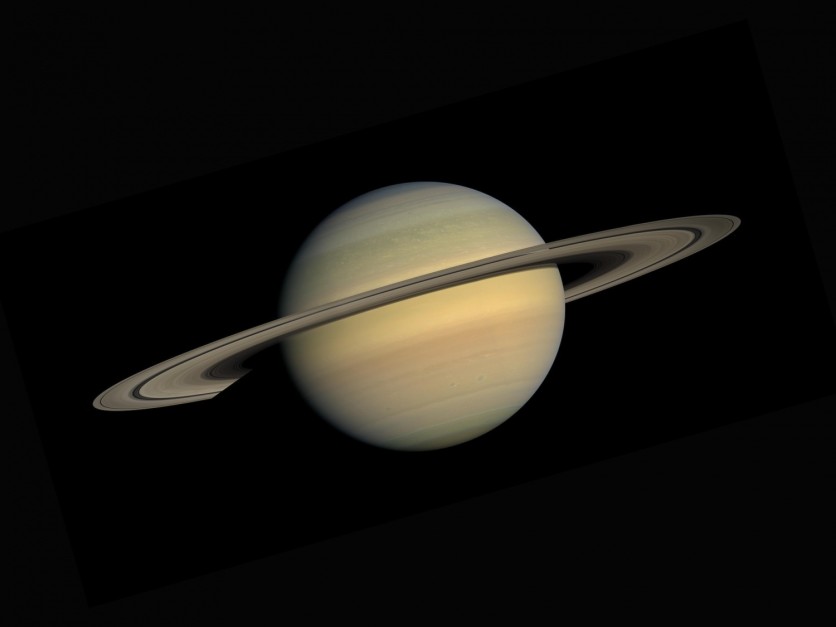Saturn's rings, the subject of interest among astronomers and scientists will disappear from our view in 2025.
NASA has confirmed that the iconic rings will disappear from our sight. It seems that beautiful things indeed come to an end, but not literally getting removed from the ringed planet.
Saturn's Rings Vanishing Act in 2025

It's essential to clarify that Saturn's rings won't be lost forever in 2025, but they will undergo an incredible transformation. Thanks to the planet's axial tilt, Earth's view of Saturn's rings changes over time, creating fascinating opportunities for observation. The next significant event is just around the corner.
The Role of Axial Tilt
Saturn's axial tilt, which is at 26.7 degrees, plays a pivotal role in this celestial phenomenon. It's this tilt that periodically brings the planet's rings to the edge-on position. When Saturn's rings go edge-on, they reflect minimal light, rendering them nearly invisible to observers on Earth.
According to Amy Simon, a senior scientist at NASA's Goddard Space Flight Center, the rings will only be slightly visible in the months leading up to and following this unique alignment. To catch a glimpse of what Saturn will look like on various dates, stargazers can utilize the PDS rings node for reference.
For those eagerly awaiting the upcoming spectacle, mark your calendars for March 23, 2025. This is when Saturn's rings will be precisely edge-on, creating a captivating astronomical event. The last time this occurred was back in 2009.
The Mystery of Saturn's Rings
For centuries, Saturn's rings have greatly pushed scientists into thinking about their purpose. Up to this day, they have research that aims to reveal the secrets behind them.
Based on the Cassini-Huygens mission of NASA, there's a possibility that the rings have been formed nearly 100 million years ago.
Observing Saturn's Rings
If you're an astronomy enthusiast, you don't need a massive telescope to observe Saturn's rings. Even small telescopes can provide clear views of the rings when they are not edge-on.
As Professor Vahe Peroomian from the University of Southern California shared, students in his astronomy class observed Saturn through a telescope just last week, and the rings were clearly visible.
"Galileo Galilei was the first person to look at Saturn through a telescope, in the early 1610s. His telescope could not resolve the rings, and it was up to Christiaan Huygens to finally realize in 1655 that Saturn had a ring or rings that was detached from the planet," Peroomian said, per CBS News.
Saturn's rings are not here to stay indefinitely. NASA claims that gravity is gradually pulling them. Another thing is that the planet's magnetic field has something to do with this phenomenon.
The so-called "ring rain "process is focused on water production. Just imagine filling an Olympic-sized swimming pool every 30 minutes. That's the gist of the process.
When this happens, the rings could slowly disappear. However, it won't happen in an instant as this is projected to take place for the next 100 million years.
The Cassini spacecraft also made a remarkable discovery: ring material is falling into Saturn's equator, potentially accelerating the rings' disappearance within the next 100 million years.
Saturn's Unique Features
It's interesting to know that Saturn boasts its exterior beauty through its rings, but it's not the only ringed planet in the solar system.
For scientists, having a good understanding of its rings could open more portals to knowing its evolution and history.

ⓒ 2025 TECHTIMES.com All rights reserved. Do not reproduce without permission.
![Best Gaming Mouse For Gamers With Smaller Hands [2025]](https://d.techtimes.com/en/full/461466/best-gaming-mouse-gamers-smaller-hands-2025.png?w=184&h=103&f=6fd057ef777bd39251d4e7e82e9b23f1)


![Best iPads that Students Can Use in School [2025]](https://d.techtimes.com/en/full/461431/best-ipads-that-students-can-use-school-2025.jpg?w=184&h=103&f=516289300e12e9647ef3d5bd69f49b70)
